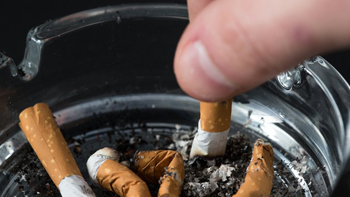Washington, Nov 30: Smokers can improve their life expectancy even if they kick the butt in their 60s, claims a new study.
 Researchers at National Institutes of Health (NIH) in the US also suggest that people aged 70 or older currently smoking were more than three times more likely to die than never-smokers.
Researchers at National Institutes of Health (NIH) in the US also suggest that people aged 70 or older currently smoking were more than three times more likely to die than never-smokers.
They reviewed data for more than 160,000 individuals aged 70 and over from the NIH-AARP Diet and Health Study.
They completed a questionnaire in 2004-2005 detailing their smoking use, and reported deaths were tracked until the end of 2011.
Analyses conducted between 2014 and 2016 correlated age at death with self-reported age at smoking initiation and cessation and amount smoked after 70 years of age.
The 2004-2005 questionnaire assessed smoking intensity in cigarettes per day and smoking history through nine age periods.
For this study, participants still smoking in their 70s were identified as current smokers, and former smokers were classified by the decade of life when quitting.
At the beginning of the study (2004-2005), the median age of participants was 75 years. Almost 56 per cent were former smokers and 6 per cent were current smokers.
Males were less likely (31 per cent vs 48 per cent of females) to be never-smokers. Males smoked more than females (18.2 pack years vs 11.6 pack years), and males were more likely to have started smoking before 15 years (19 per cent vs 9.5 per cent of female smokers).
During an average follow-up of 6.4 years, almost 16 per cent of the participants died. While 12.1 per cent of the never smokers died, 16.2 per cent, 19.7 per cent, 23.9 per cent and 27.9 per cent of former smokers who quit between ages 30-39, 40-49, 50-59, and 60-69 years died, respectively.
Current smokers fared the worst, with 33.1 per cent dying. Mortality rates for women were lower than men at each level of smoking use.
"These data show that age at smoking initiation and cessation, both key components of smoking duration, are important predictors of mortality in US adults aged 70 years and older," said Sarah H. Nash, from NIH. The study was published in the American Journal of Preventive Medicine.





Comments
Add new comment